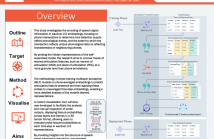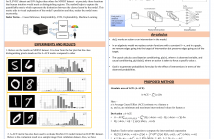
- Read more about FOLLOWING THE EMBEDDING: IDENTIFYING TRANSITION PHENOMENA IN WAV2VEC 2.0 REPRESENTATIONS OF SPEECH AUDIO
- Log in to post comments
Although transformer-based models have improved the state-of-the-art in speech recognition, it is still not well understood what information from the speech signal these models encode in their latent representations. This study investigates the potential of using labelled data (TIMIT) to probe wav2vec 2.0 embeddings for insights into the encoding and visualisation of speech signal information at phone boundaries. Our experiment involves training probing models to detect phone-specific articulatory features in the hidden layers based on IPA classifications.
- Categories:
 87 Views
87 Views
- Read more about Class Specific Interpretability in CNN Using Causal Analysis
- Log in to post comments
A singular problem that mars the wide applicability of machine learning (ML) models is the lack of generalizability and interpretability. The ML community is increasingly working on bridging this gap. Prominent among them are methods that study causal significance of features, with techniques such as Average Causal Effect (ACE). In this paper, our objective is to utilize the causal analysis framework to measure the significance level of the features in binary classification task.
- Categories:
 27 Views
27 Views
- Read more about Deep-URL
- Log in to post comments
The lack of interpretability in current deep learning models causes serious concerns as they are extensively used for various life-critical applications. Hence, it is of paramount importance to develop interpretable deep learning models. In this paper, we consider the problem of blind deconvolution and propose a novel model-aware deep architecture that allows for the recovery of both the blur kernel and the sharp image from the blurred image.
- Categories:
 41 Views
41 Views